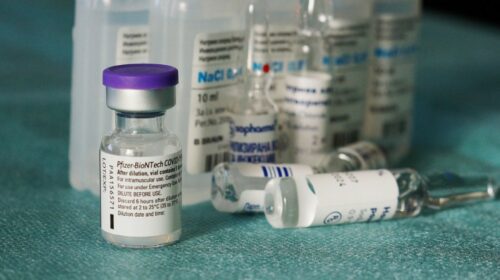Since December 31, 2019, when COVID-19 was first reported to the World Health Organization, the world has been waiting to hear positive news about a COVID-19 vaccine. At last, we have more than three successful vaccines. But success as described by the news may not tell the full story. Surprisingly, Yale professors Jason L. Schwartz and David Paltiel, along with professors from Harvard University, found that the real success of these vaccines can only be determined by the efficiency of their implementation. Their research considered specific issues related to vaccine distribution using a mathematical simulation that accounted for various factors, like the speed of manufacturing and distribution and the extent of vaccine delivery.
The SEIR model they used is one of the simplest mathematical models of the possible progression of an infectious disease. It illustrates the infectious spread through different stages. Initially, researchers used a population size of one hundred thousand people, where they assumed 0.1 percent of the people would be exposed to the virus and another nine percent recovered. To better reflect the parameter of vaccine efficacy in this model, the researchers took into account differing vaccine types, such as a preventative vaccine, a disease-modifying vaccine, and a composite vaccine that bears the features of both. To account for pace, researchers assumed 0.5 percent of the population could be vaccinated in a single day, since this was the daily percentage reached during influenza vaccination efforts in the US.
Researchers also used alternative values to achieve a more nuanced modelling. For example, coverage is a parameter that is concerned mainly with the more social side of the vaccination process. It measures public acceptance of the vaccine as well as the availability of the vaccine. For this parameter, researchers’ base-case value was fifty percent, which led to the conclusion that, under these assumptions for pace, it would take one hundred days to reach the fifty percent target coverage. Additionally, the model included epidemic severity scenarios (total number of infections, deaths, and intensive care unit use) and the natural history of the COVID-19 virus—which relates to the biological structure of the virus and how it is predicted to spread over time.
Data from the study can significantly pave the way for future public health measures. They exhibited that the efficacy of the vaccines displayed in clinical trials plays a less significant role when compared to implementation and the epidemiological environment into which it is introduced. Rt can be defined as the “effective reproductive number of the virus.” The results suggested that if Rtis lower, a low-efficacy vaccine can have a greater impact on the decrease in infections than a high efficacy one. When this rate is higher, implying that the public health measures are not properly followed, even the most successful vaccines fall short in decreasing infections.
The results also displayed another significant conclusion regarding the social reality of vaccination. “Logistics of infrastructure—such as getting the proper amounts of freezers and doses to the exact places they need to be—has a vital role in accelerating the effectiveness of the vaccines,” Schwartz said on Newsmakers, a podcast series by the journal Health Affairs. He highlighted that the governments should put ample time and effort into helping educate the public and inform them about the importance of these vaccines. Educational messaging should rely heavily on communicating why vaccination is beneficial, as well as finding strategies to gather states, local administrations, healthcare providers and scientists to spread information on vaccine safety. This way, we can get past the social reality dilemma.
Though we have a long way to go in achieving flawless vaccine production, distribution, and deployment processes, Schwartz stressed in his podcast interview that we have reached historic progress with promising vaccines in record time. He also expressed positivity on governmental efforts to invest in production and distribution of vaccines. Now, all we need to do is to put more energy towards public education and transportation of the vaccines. With attentive governmental endeavors and continuous efforts to follow public health measures, we will defeat this pandemic that has turned our lives upside down.
Works Cited
Paltiel, A. D., Schwartz, J. L., Zheng, A., & Walensky, R. P. (2021). Clinical Outcomes Of A COVID-19 Vaccine: Implementation Over Efficacy. Health Affairs, 40(1), 42–52. https://doi.org/10.1377/hlthaff.2020.02054
Schwartz, J. L. (2020, November 24). “All hands on DECK” – preparing for the distribution of COVID-19 Vaccines Health Affairs Podcast https://www.healthaffairs.org/do/10.1377/hp20201202.663555/full/.

